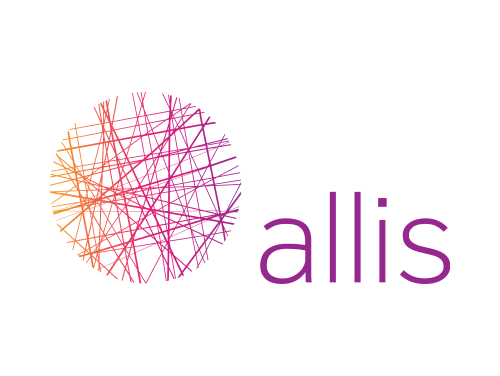Investing in AI: A Game-Changer for Retail Execution at the POS
Our Clients
Committing to the success of our clients around the world
The retail industry is undergoing a radical transformation, with artificial intelligence (AI) at the forefront. The integration of AI in retail execution, particularly through product recognition at the point of sale (POS), is not just a trend—it’s a revolution that promises to redefine how businesses operate. As retailers seek to enhance efficiency, accuracy, and customer satisfaction, AI-driven solutions offer a compelling proposition. But what are the real costs involved, and how do the benefits stack up?

Beyond the Price Tag: The Real Cost of AI in Retail Execution
When considering the adoption of AI for product recognition, the initial focus falls on the financial investment. However, the true cost of implementing AI extends beyond the obvious. Here’s a closer look at what’s involved:
- Technological Investment: At the core of AI-driven retail execution is sophisticated technology. High-resolution cameras, advanced computing power, and cutting-edge algorithms are essential components. These systems must be capable of recognizing a vast array of products under varying conditions, including different lighting and angles. The development and deployment of such technology require significant capital.
- Integration Complexity: Seamlessly integrating AI with existing POS systems, inventory management, and supply chain operations is no small feat. This process requires a deep understanding of both the new technology and the existing infrastructure. It often involves custom software development and the reconfiguration of current systems, which can be time-consuming and costly.
- Continuous Improvement: AI systems thrive on data. To maintain and improve their accuracy, they need to be continuously trained with new data, which can include updates in product packaging, new product lines, and changes in store layouts. This means that AI is not a set-and-forget solution; it demands ongoing investment in data management and system updates.
- Human Capital: While AI automates many tasks, it also necessitates new skill sets. Retailers need to invest in training their workforce to manage and operate AI systems effectively. This could mean hiring data scientists, AI specialists, and IT support staff, adding another layer to the overall cost.
- Security and Compliance: AI systems in retail often handle sensitive customer data. Ensuring this data is secure from breaches and compliant with privacy laws (such as GDPR) requires additional investment in cybersecurity measures and legal oversight.
While these costs can seem daunting, they are often outweighed by the substantial benefits that AI brings to retail execution.
The Strategic Benefits of AI-Driven Product Recognition

AI-driven product recognition at the POS is more than just a tool—it’s a strategic asset that can deliver significant competitive advantages.
- Precision at Scale: One of the most significant benefits of AI is its ability to deliver precision at scale. Unlike human workers, who may vary in their accuracy and efficiency, AI systems can consistently recognize and process products with near-perfect accuracy, no matter the scale of operations. This ensures that inventory levels are accurately tracked, pricing is always up-to-date, and promotional displays are correctly set up, all of which contribute to increased sales and reduced operational errors.
- Speed and Efficiency: AI can process information and make decisions in real-time, drastically reducing the time it takes to perform routine tasks like stock checks, shelf audits, and planogram compliance. This speed translates into quicker restocking, fewer out-of-stock situations, and a more responsive retail environment.
- Enhanced Customer Engagement: AI’s ability to analyze consumer behavior and product interactions at the POS can lead to more personalized shopping experiences. Retailers can use these insights to tailor their offerings, create targeted promotions, and even predict future purchasing trends. This level of personalization fosters stronger customer loyalty and can significantly boost sales.
- Operational Flexibility: Those systems powered by AI are highly adaptable and can be scaled across multiple locations with relative ease. This flexibility allows retailers to maintain consistency across stores while also adapting quickly to local market conditions. For example, AI can help tailor product displays to regional preferences or optimize inventory based on local demand patterns.
- Sustainability and Waste Reduction: AI’s predictive analytics can play a crucial role in reducing waste. By accurately forecasting demand, AI helps retailers optimize their inventory levels, minimizing overstock and reducing perishable goods wastage. This not only saves money but also aligns with growing consumer demand for sustainable business practices.
- Risk Mitigation: By continuously monitoring supply chain conditions and analyzing potential disruptions, AI can help retailers adjust their strategies on the fly, ensuring that shelves remain stocked and customers remain satisfied.
Maximizing the ROI of AI in Retail Execution
The benefits of AI in retail execution are clear, but realizing these benefits requires a strategic approach:
- Start Small, Scale Fast: For retailers hesitant to make a significant upfront investment, starting with a pilot program can be an effective strategy. This allows for the testing of AI systems in a controlled environment, providing valuable insights and data that can inform a broader rollout.
- Focus on Integration: The success of AI in retail execution hinges on seamless integration with existing systems. Retailers should prioritize working with AI providers who offer flexible, customizable solutions that can be tailored to their specific needs.
- Leverage Data for Continuous Improvement: AI systems improve with data. Retailers should invest in robust data collection and management systems to ensure that their AI solutions continue to evolve and adapt to changing market conditions.
- Invest in Talent: The best AI systems are only as good as the people who manage them. Retailers should invest in training their workforce and, where necessary, hiring new talent with the skills needed to maximize the potential of AI.
Conclusion

Investing in AI for product recognition at the POS is not just a technological upgrade—it’s a strategic investment that can drive significant improvements in retail execution. From enhancing accuracy and efficiency to boosting customer engagement and sustainability, the benefits of AI are profound and far-reaching. While the initial costs may be substantial, the long-term returns in terms of operational excellence and competitive advantage make AI a game-changer for modern retail.
We’ve also explored how point of sale marketing and merchandising strategies shape customer behavior — discover more insights about POS.
Success Stories
 Allis
Allis
 Coca Cola
Coca Cola
 Perfetti Van Melle
Perfetti Van Melle
 Nestle
Nestle
 Danone
Danone
 Mars
Mars
 Tarweej
Tarweej
 TOP 3 Retail Chain
TOP 3 Retail Chain
 Global Retail Corporation
Global Retail Corporation
 World’s Leading Manufacturer
World’s Leading Manufacturer
 Global FMCG Brand
Global FMCG Brand
 Leading Food Manufacturer
Leading Food Manufacturer
 Global Food Manufacturer
Global Food Manufacturer
 Global Coffee Manufacturer
Global Coffee Manufacturer
 Major Spirits Producer
Major Spirits Producer
 Global Pharmaceutical Brand
Global Pharmaceutical Brand
 Leading Food Manufacturer
Leading Food Manufacturer
 Global FMCG Brand
Global FMCG Brand
 Leading Food Manufacturer
Leading Food Manufacturer
 Leading Spirits Producer
Leading Spirits Producer
 Major FMCG Brand
Major FMCG Brand
 Major Coffee & Tea Manufacturer
Major Coffee & Tea Manufacturer



















